
11 of the Best Historic Home Before and After Transformations We’ve Ever Seen




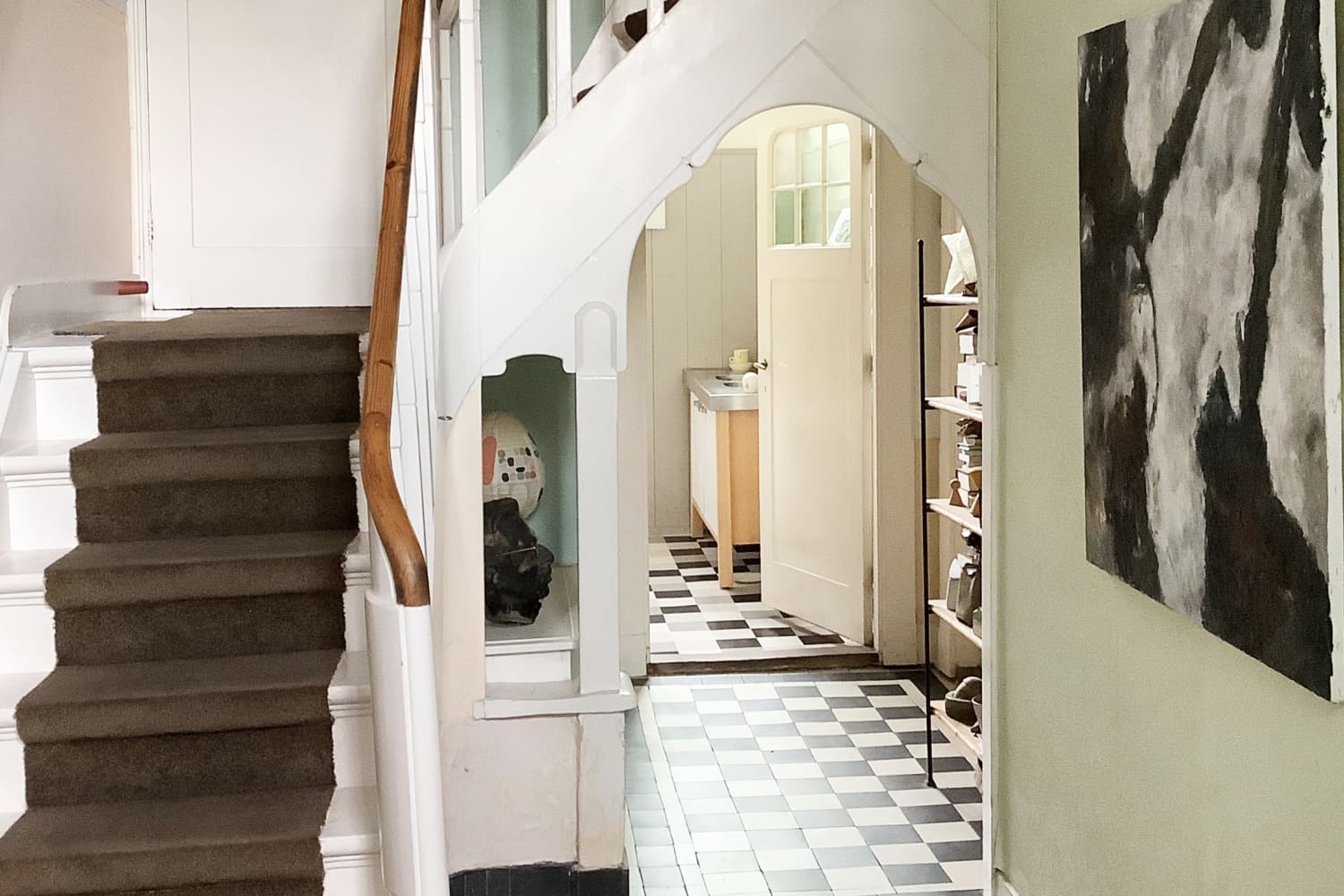
Name: André Keikes, partner, Ineke (she), and our two tomcats, NekoNeko and Sensei
Location: Leeuwarden, Netherlands
Type of home: Canal house
Size: 1940 square feet
Years lived in: 17 years, owned
Tell us a little (or a lot) about your home and the people who live there: Both Ineke and I work as artists and illustrators, so our canal house, which was built in 1904, is filled with art, both paintings, drawings, and objects of colleagues and friends and our own artwork. Every week I make a drawn portrait of a Dutch writer for tzum.info, a popular blog in the Netherlands and Flanders about literary books, for which I also write weekly reviews. So also lots of books can be found in every room. Ineke specializes in autonomous artwork and is an inspired reader, too.
For over 25 years Ineke and I worked together on a three-dimensional piece of art, named Argus, that was expanded with new supplements every six months. We designed it like a magazine, so that buyers also became subscribers. Just like in a paper magazine the “articles” (new parts) never were the same, but Argus nevertheless was recognizable in its basic form. Argus is still a valuable piece of art to us in our home. We lived in different places, but fell in love with this house, because we liked the possibilities to change it into a sustainable home-atelier, which means a place where we can live, work, and create without worries about the friendly mess we cause: the perfection of imperfection.
You can definitely find books and art objects in every room. Even colorful cartoons and little drawings in the small room on the mezzanine between the ground floor and the first floor, where you can find the toilet. Very important to us is the dreamy filtered natural light in every room that comes in through the small upper windows.
Describe your home’s style in 5 words or less: Nice and easy
What is your favorite room and why? Our favorite room is our spacious living with its high beamed ceiling, access to the garden, and wonderful view on the canal. We can live and work there where and when we want: it’s our creative space, filled with peaceful energy. But it’s a difficult choice. Our hall is a really exceptional one, with its detached staircase, mezzanine, nice details in wood, and the magnificent tile floor.
What’s the last thing you bought (or found!) for your home? The last thing we bought is a small vintage lampshade at vintagemrkt.
Any advice for creating a home you love? To keep your rooms as spacious as possible, we prefer to choose compact furniture on elegant feet, so that you can see the floor beneath. It isn’t necessary at all to fill the middle of a room. By avoiding chairs and tables in the center, you achieve what everyone wants to have: a lot of space to live. And above all, live your life nice and easy. Don’t be afraid of some scrapes or dents; these only reflect that you’re human. In the evening we like to switch on several little lights instead of two or three powerful light elements. In our living room for instance you can find 22 lamps. Some are quite traditional, but a lot are only small luminous objects. Together they illuminate our rooms in an enchanting way.
This submission’s responses and photos were edited for length/size and clarity.
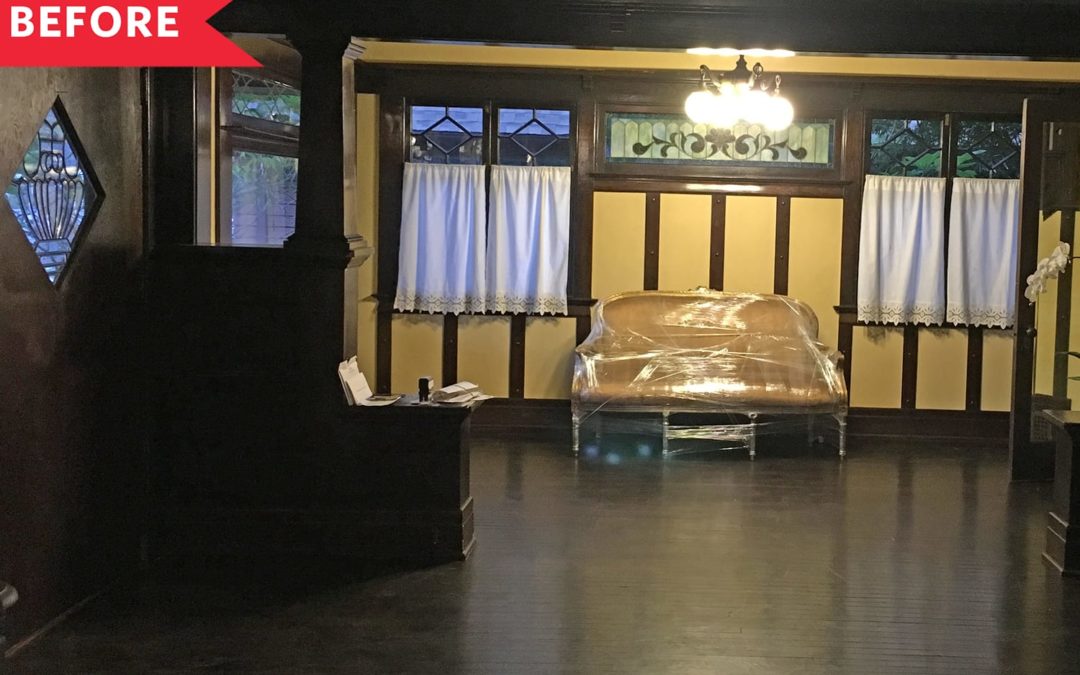
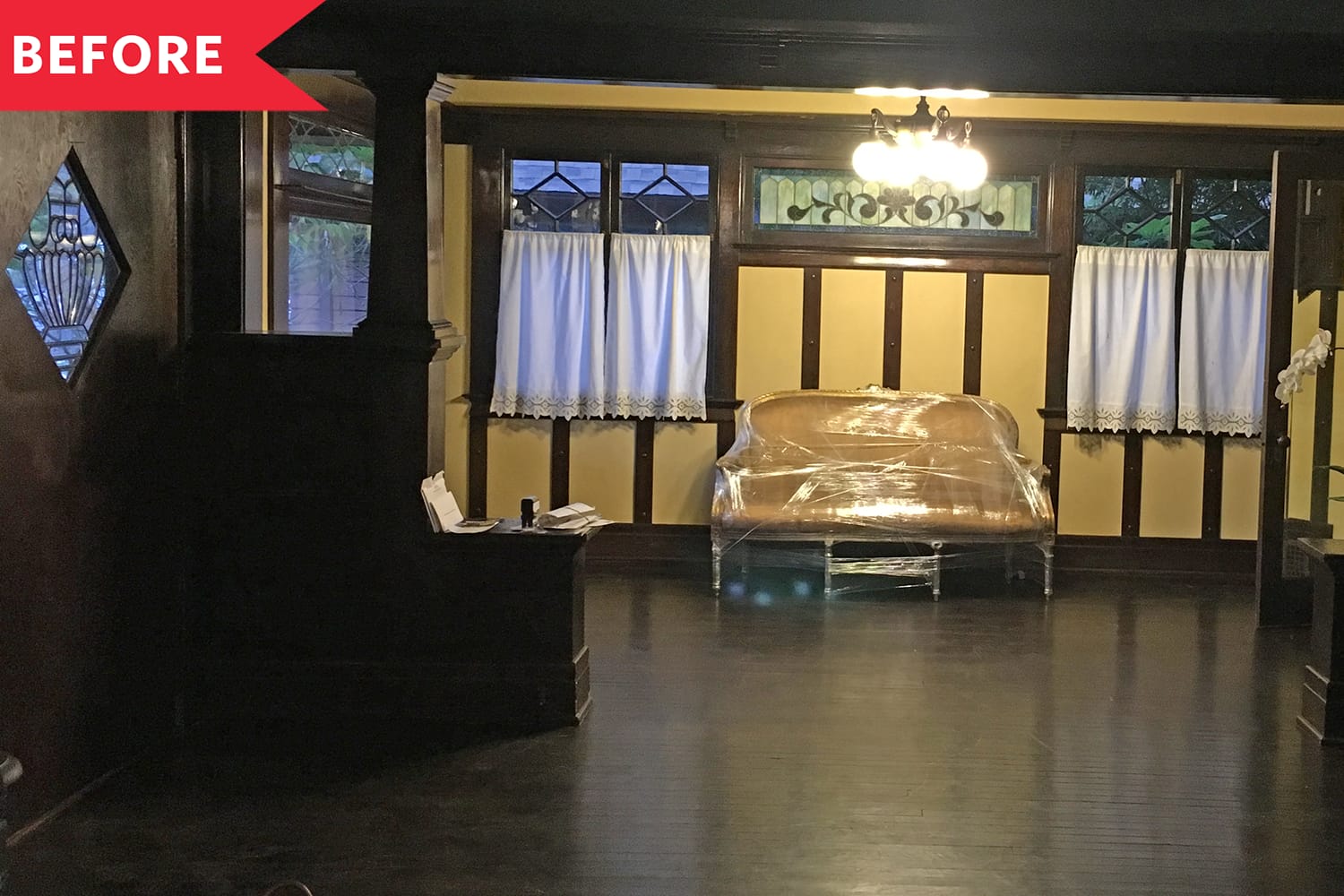
We independently select these products—if you buy from one of our links, we may earn a commission.
Name: Jennifer Robyn Laskey, fiancé, Hunter Grantham Hall, Kingsley the Puppyman (Husky/Pomeranian/ Samoyed rescue ploof), Mr. Muffin (silver shaded Persian cat), and Kitty Capone (Himalayan cat that has lived with me in my past four historic apartments and homes)
Location: Los Angeles, California
Type of home: House
Size: 2,478 square feet
Years lived in: 3 years, owned
Jenn Laskey, owner of Red Light Special Events, is almost certain she was an interior designer or an architect in a past life, probably from the 1920s or 1930s. She loves ornate, showstopper vintage sconces and chandeliers — in every room. She loves a vintage stove, a pedestal sink, a wallpapered bathroom, and a rich-toned vintage Persian rug. She “can’t get enough of anything tufted, velvet, or mirrored.”
She’s the type of person who makes vision boards with restoration plans for old homes before she’s even moved in. “My partner and I offered on 12 historic-style houses, trying for about a year before we found and won this gem,” Jenn says of her most recent restoration project and the place she calls home, a 1909 Craftsman-style with lots of Victorian accents located between West Adams and Koreatown in Los Angeles.
Remarkably (and enviably), the home is full of original, gorgeous architectural details, like “untouched hardwood floors, windows with diamond-shaped panes, an original fireplace, stained glass built-ins, majestic woodwork, cabinetry, tile, hardware, and an astounding collection of vintage light fixtures,” she explains.
Jenn’s home, also known as the Historic Hobart Wallsworth House, is in an HPOZ (historic preservation overlay zone), and is a Mills Act home. The Mills Act is a California-based tax incentive awarded to a select amount of applicants per year. In turn for a property tax credit, homeowners submit a plan to spend the tax savings (and then some) on repairs to preserve the character for the home.“This was a huge plus to me and luckily scared away most other buyers,” Jenn says. “I am a big fan of these programs and protected enclaves.”
Three years after purchasing, Jenn has returned the historic home to its roots by restoring antique light fixtures, switches, sinks, knobs, hardware, and more. “I feel really strongly that the design has to be partly based on the architecture and the bones of the house,” she says. “In this house, it’s easy to see that I channeled the creepy, sexy, vintage vibe with Victorian elements.”
My style: I’m a big fan of Spanish, Moroccan, and Parisian design influences … I feel you should never buy more than a few pieces from the same store, but instead collect gems and treasures from a variety of sources. It took me a long time, but I finally acquired all of my dream furniture, vintage fixtures, and antique accents.
Inspiration: I feel constantly moved and inspired by the original charm and ornate details of original architecture all across Los Angeles, and its architecture has hugely influenced my design eye and the way I decorated our home. I love that you can see such an array of historic architecture in LA, styles ranging from Spanish Colonial revival (as found in Miracle Mile and Carthay), to French Normandy, Tudor, Storybook and Hacienda, Queen Anne, modern, Craftsman, bungalow, and Eastlake. (I do love Angelino Heights!). I live for it, and it has inspired so much of my life! Famed architects Arthur and Nina Zwebell have also influenced me greatly. I have researched them and every one of their buildings, and I wish I could find out more about them, though there isn’t much information available.
Favorite element: Oh for sure the dining room is my absolute favorite. The built-in cabinetry, with its stained glass and dark wood, is to die for. I also love the very rare rounded room/windows. Most of the windows in the house have this very cool paned diamond pattern that I hadn’t seen before I moved here, but many homes by our architect, Frank Tyler, have these windows.
Biggest Challenge: I installed air conditioning and went with a referral from a friend who used to work in the HVAC business, and it was a nightmare. They used the existing heater ducts and blower unit, but for whatever reason, the pressure of the AC was absolutely terrible. After, like, 13 visits to try to fix what was basically a useless but large investment, the company gave up and couldn’t figure out why the AC wasn’t reaching the rooms well, especially the second floor. Maybe that’s a historic house problem. In the end, we had many more days of construction after I already lived here … After a painstaking process, though, we now have AC and beautiful vents, too! It did take me weeks to accept cutting floor vents into my original hardwood floor, but after exhausting literally every other possibility, this became the only solution, which wasn’t as terrible as I thought it would be.
Proudest DIY: This was assisted by my handyman, but I found this incredible set of French doors on eBay that were actually very close to me, so we picked them up. They had the same rare diamond pattern design as my windows and seemed meant to belong in my house.
Biggest Indulgence: One of the pricier purchases I got in the past 15 months after eyeing it for years and years was a vintage-inspired very hand-aged leather Chesterfield by Timothy Oulton. YES it was worth it.
Is there something unique about your home or the way you use it? I have a large wardrobe collection. No closets ever suffice. I took the smallest of four bedrooms and made it an entire walk-in closet/dressing room complete with deep red paint.
Finally, what’s your absolute best home secret or decorating advice? My best advice is never settle. Search, wait, save, scour, research, etc. until you can find exactly what you want. I feel this goes not only for finding your apartment or home, but every piece you put inside it as well. I recommend you get exactly what you want, what your heart desires, and what inspires you even if it takes some time.
This house tour’s responses were edited for length and clarity.
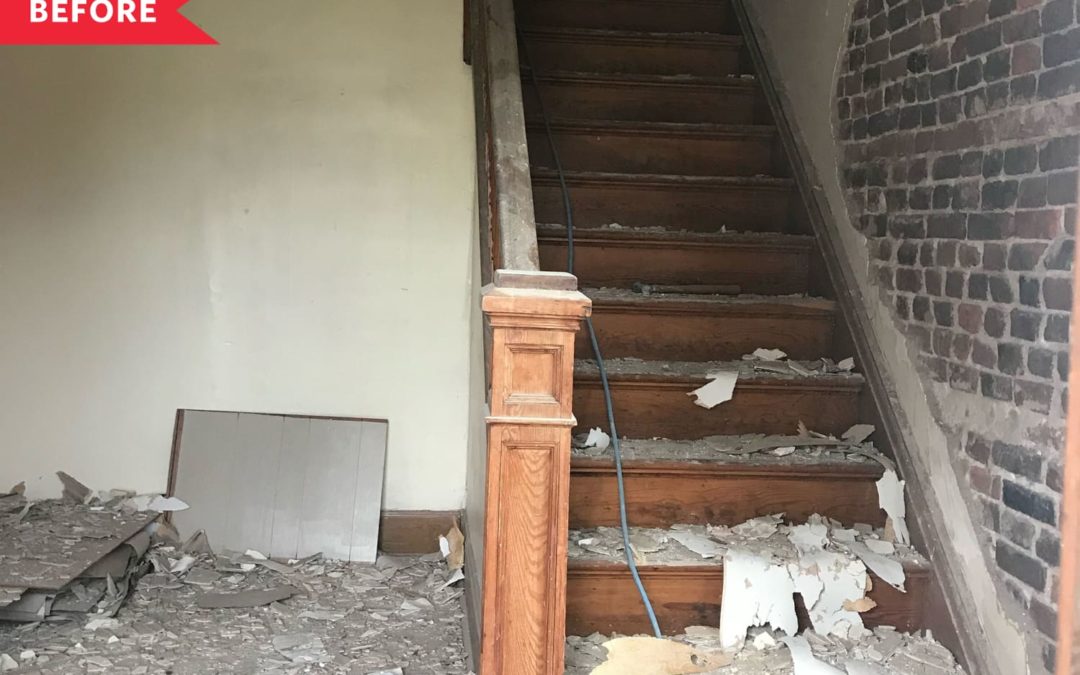
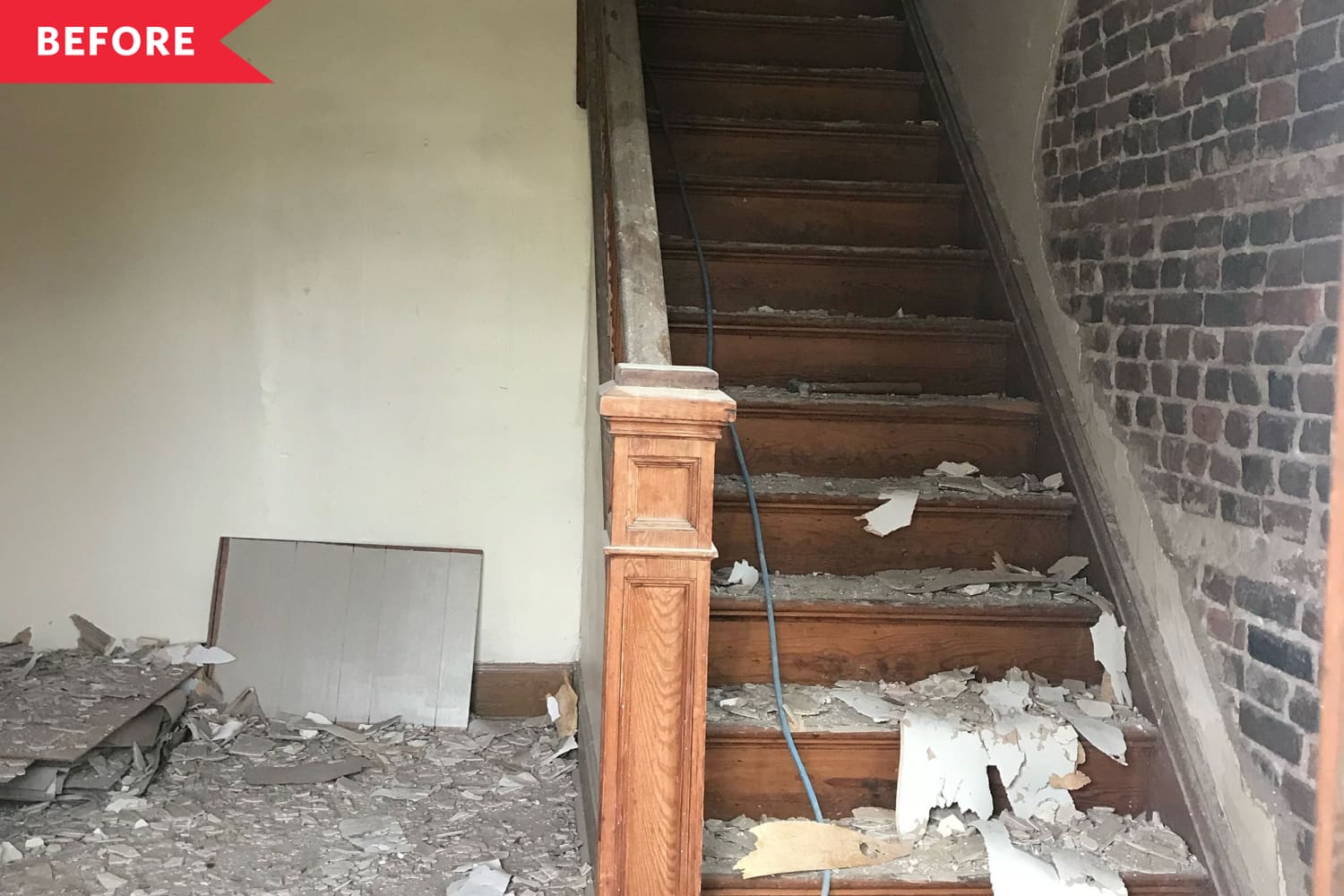
We independently select these products—if you buy from one of our links, we may earn a commission.
Name: Mick, Paige, and dogs Blue and Tres
Location: Ozarks of Southwest Missouri
Size: 1,800 square feet
Type of Home: House
Years lived in: The house was renovated for two years, and we have lived in it for two years. So, we have owned the house for four years total.
First impressions matter, and this historic home makes a grand one. When guests walk into Mick and Paige’s house, they immediately enter a library of curiosities. The shelves are adorned with books with gold leaf engravings and Victorian-era scientific instruments. Also located in the entry library is an 18th-century French harp and a functioning phonograph, which make great conversation pieces. In fact, nearly every object in the home has a tale behind it.
The duplex-turned-single home was decaying when they first saw it. But as full-time artists, the couple had the creative intuition to envision its potential. Looking past the rough edges, they purchased the 1,800 square-foot building and transformed it back into a single-occupant home while preserving its history.
“We fell in love with our home after walking by it for years in the historic district of our city,” explains Mick. “When it finally came up for sale, we knew that we had to buy it. Our house was built in 1881, and it is a dramatically different style of architecture than any other residential buildings in the area. The original inhabitants were the family of a member of the Brick Mason’s society. After he was killed on the job, the Society of Brick Masons built a home for his family, and because they specialized in industrial buildings, the architectural design of the building is far more similar to commercial buildings of the 19th century than the popular Victorian styles of the late 1800s.”
The two have amassed an art collection and have become friends with most of the creators. They’ve also brought back multiple antiques from their travels in their carry-ons — Mick swears by packing a roll of bubble wrap.
My Style: My design taste is influenced by art and natural history museums that we have encountered during our travels.
Inspiration: My collections and career are based in mechanical and scientific innovations of the 18th and 19th centuries. I have always been enthralled by the small window of time that birthed the technologies we live by today. The pieces I have collected for my home showcase the humble origins of modern industry.
Favorite Element: My favorite element about our house is all of the windows. It was built prior to household electricity, so there was a necessity to have an abundance of natural light.
Biggest Challenge: Our biggest challenge while renovating our home was exposing the interior brick. It was a very messy and laborious process of removing 140-year-old horsehair plaster. Removing the plaster was necessary for structural purposes as well as aesthetic. Over the years, the mortar had eroded between some of the bricks, and the house needed to be tuck-pointed both inside and out. We did the demo ourselves with the help of some friends and were careful to remove the plaster without further damaging the underlying brick and mortar.
Proudest DIY: I think every man’s proudest project is probably his home bar. I’ve always been a fan of hidden spaces in a home, and what better thing to hide than your drinking habits? While I was framing in spaces for the air ducts to feed the vents on the second floor, I found that the majority of the space was wasted with just two ducts filling a fairly large shaft. I used this space to build a hidden bar behind a painting mounted to piano hinges to create a hidden door. The painting hung in a small town courthouse for nearly 100 years and depicts Lady Justice. This painting alludes to a huge number of subtle imagery and seemed like a perfect piece to hide the secret that lies behind it.
Biggest Indulgence: The most expensive non-essential project in our renovation was certainly the library. I am constantly in awe of the grand libraries seen in estates throughout Europe. I wanted the first impression when entering our home to be that you are walking into a curiosity cabinet of the 19th century. Upon entering the house, you are immediately surrounded by knowledge, culture, and innovations of the past. I think the entrance creates an interesting juxtaposition with the contemporary world; it removes guests from their modern surroundings and places them into the design theme of our home.
Is there something unique about your home or the way you use it? When we bought the house, it was in a severe state of decay. While it was originally built as a single-family home, the previous owners had the floors divided, turning it into a duplex. This adaptation left a makeshift kitchen in the original upstairs bedroom, a weight lifting bench in the downstairs dining room, and a laundry machine in what is now the library. While our use of the spaces is fairly traditional, the history of the house has not always been that way.
What are your favorite products you have bought for your home and why? My favorite products in our home would have to be our couches. I am from a family of very large humans, and conventional seating becomes less comfortable for people of a certain height. Restoration Hardware’s luxe size couches, whether it is the Lancaster downstairs or the Chesterfield upstairs, are four feet deep and well worth every penny!
Please describe any helpful, inspiring, brilliant, or just plain useful small space maximizing and/or organizing tips you have: Display cabinets are wonderful for hiding things! Rather than console or end tables, I typically utilize apothecary or general store cabinets. These have available space on top for display but enclosed drawers to hide essentials from candles to screwdrivers that are less attractive to guests.
What’s your absolute best home secret or decorating advice? My career has been in finding and building from rare items of the past. I have learned from those pursuits to buy what you love when you come across it. My greatest regrets have always been in the things I passed up rather than the things I purchased. Designing spaces is one of the greatest forms of art; it allows you to live inside the beauty you have created and share it with those who you care about.
This house tour’s responses were edited for length and clarity.